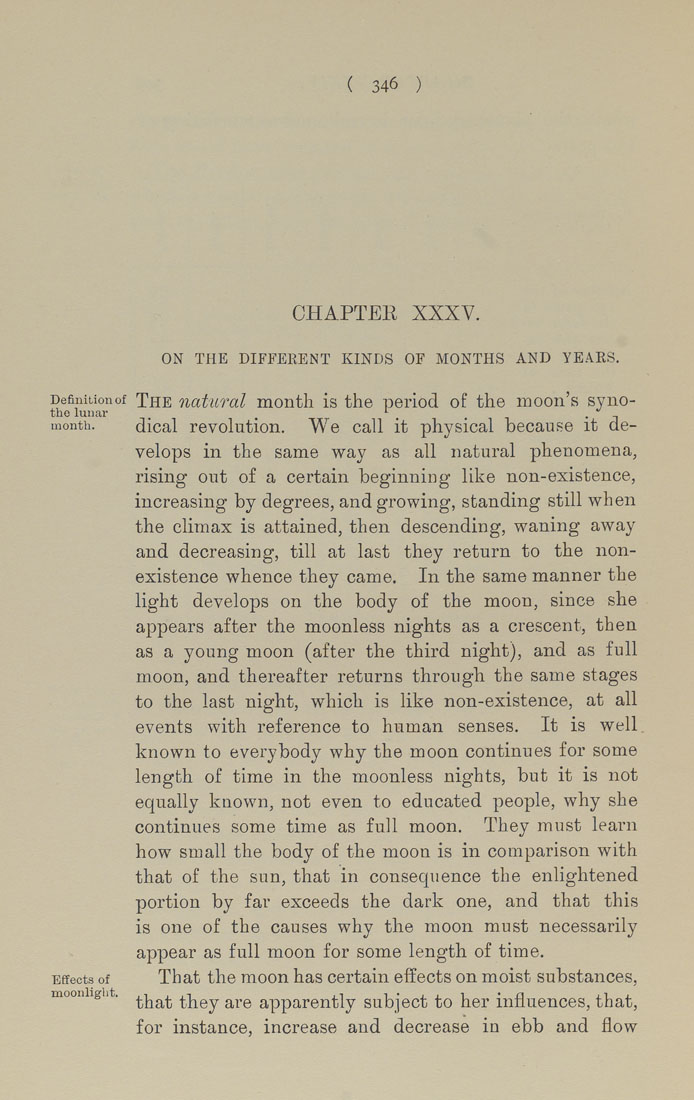Bīrūnī, Muḥammad ibn Aḥmad, Alberuni's India (v. 1)
(London : Kegan Paul, Trench, Trübner & Co., 1910.)
|
||
|
|
|
|
| Page 346 |

( 346 CHAPTFR XXXV. ON TIIE DIFFERENT KINDS OF MONTHS AND YE.\RS. Definitionof The natural month is the period of the moon's syno- the lunar ^ . month. dical rcvolution. We call it physical because it de¬ velops in the same way as all natural phenomena, rising out of a certain beginning like non-existence, increasing by degrees, and growing, standing still when the climax is attained, then descending, waning away and decreasing, till at last they return to the non¬ existence whence they came. In the same manner the light develops on the body of the moon, since she appears after the moonless nights as a crescent, then as a young moon (after the third night), and as full moon, and thereafter returns through the same stages to the last night, which is like non-existence, at all events with reference to human senses. It is well, known to everybody why the moon continues for some length of time in the moonless nights, but it is not equally known, not even to educated people, why she continues some time as full moon. They must learn how small the body of the moon is in comparison with that of the sun, that in consequence the enlightened portion by far exceeds the dark one, and that this is one of the causes why the moon must necessarily appear as full moon for some length of time. That the moon has certain effects on moist substances, that they are apparently subject to her influences, that, for instance, increase and decrease in ebb and flow Effects of moonlight. |
| Page 346 |







